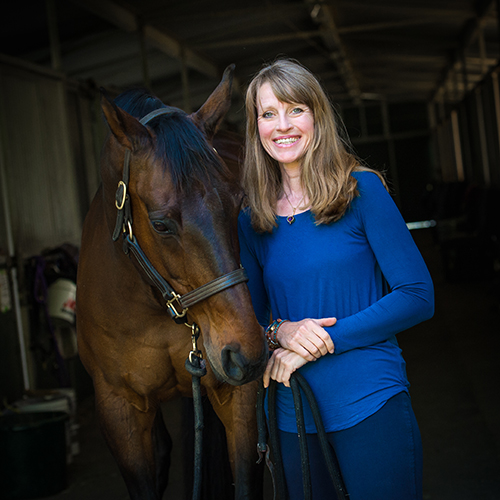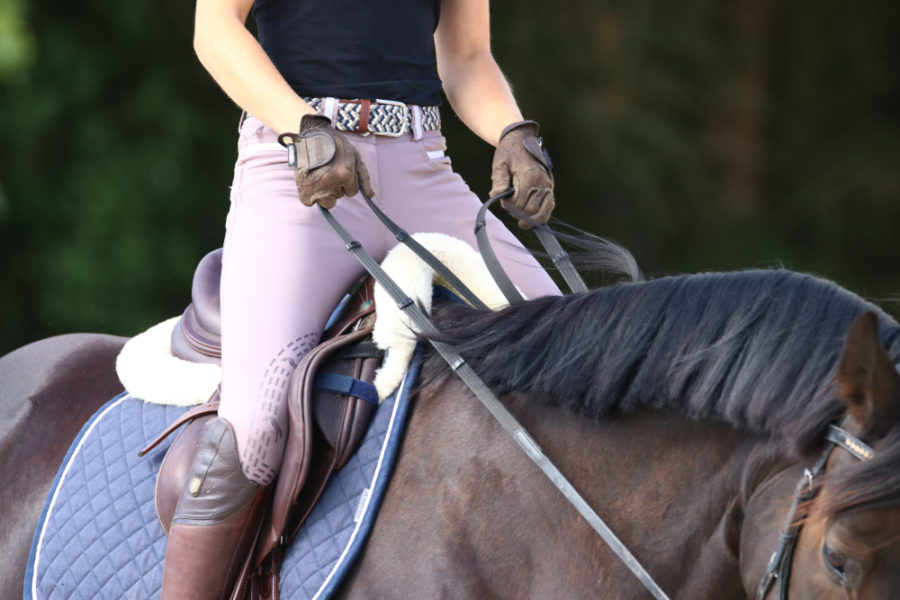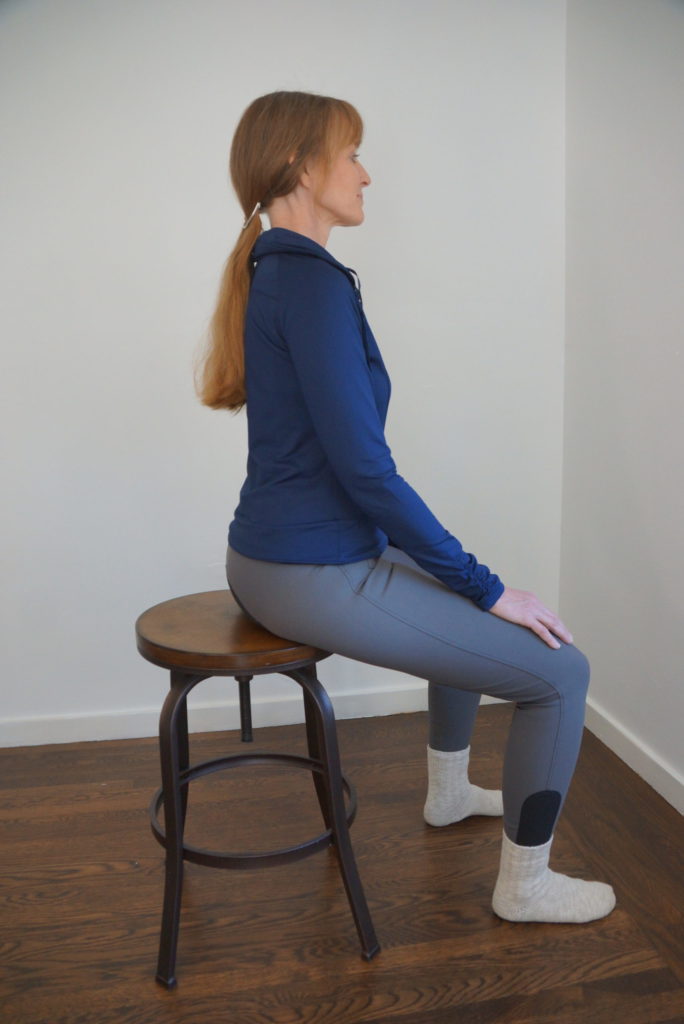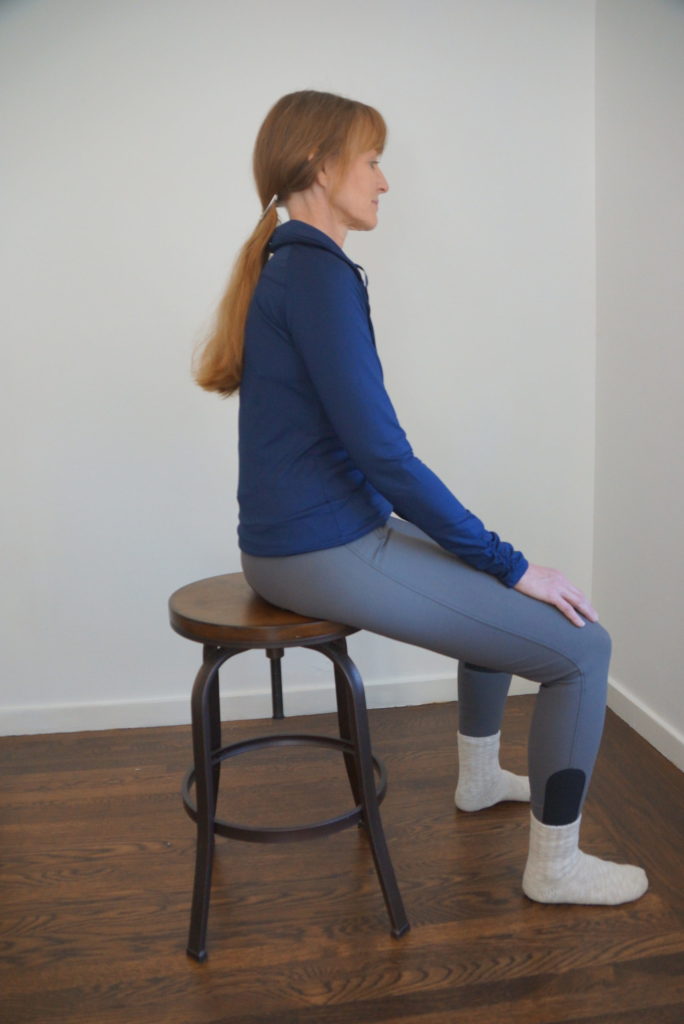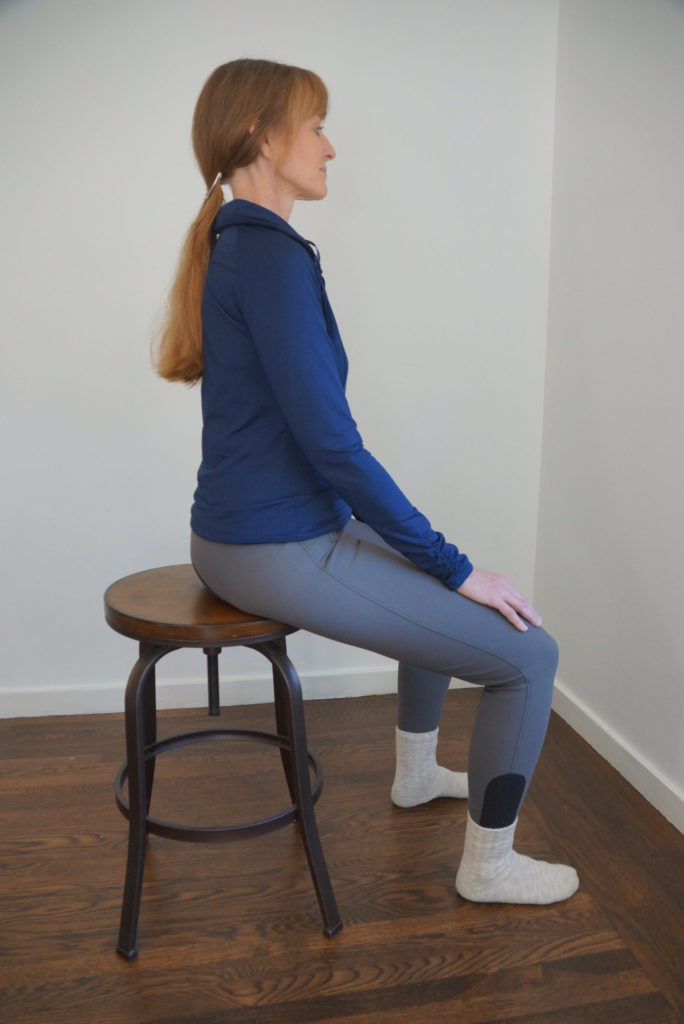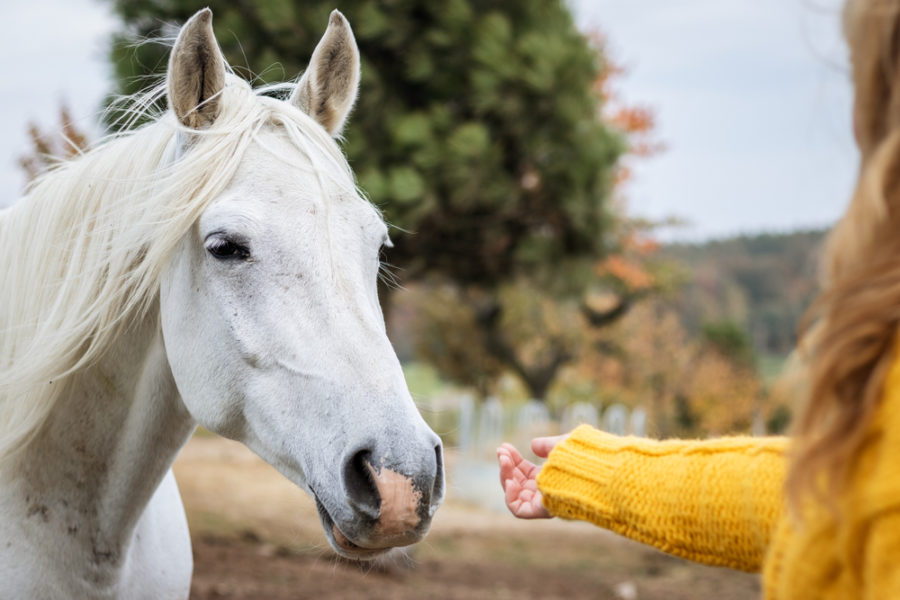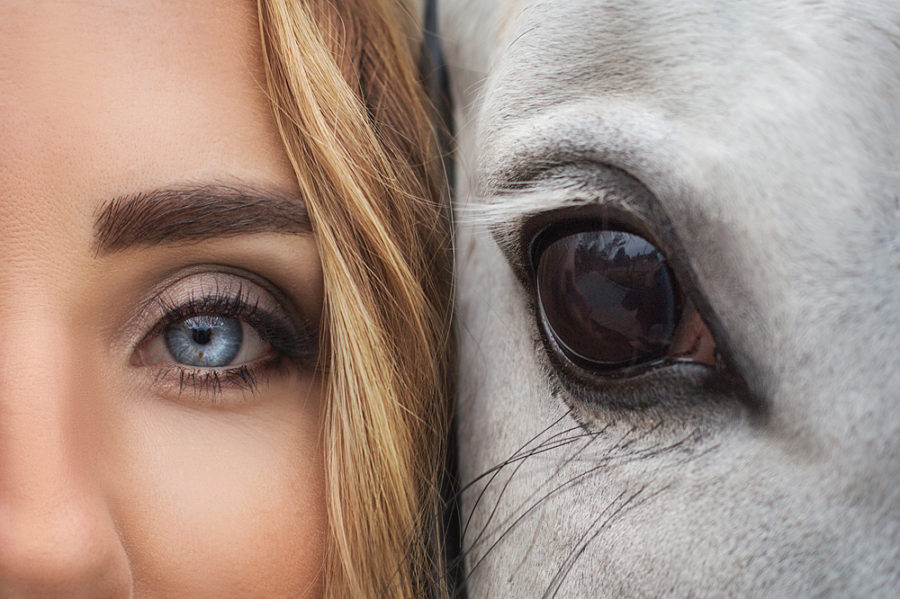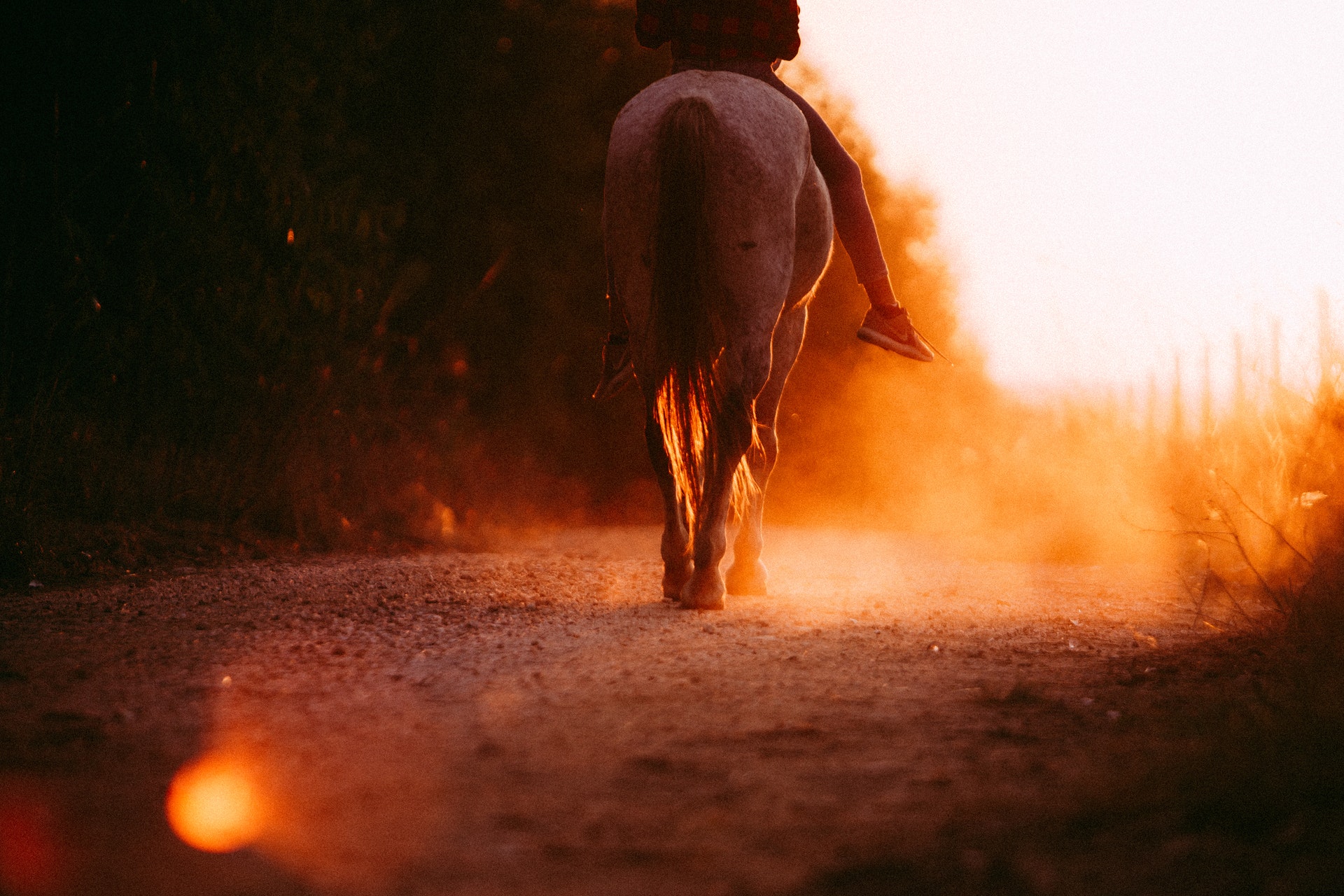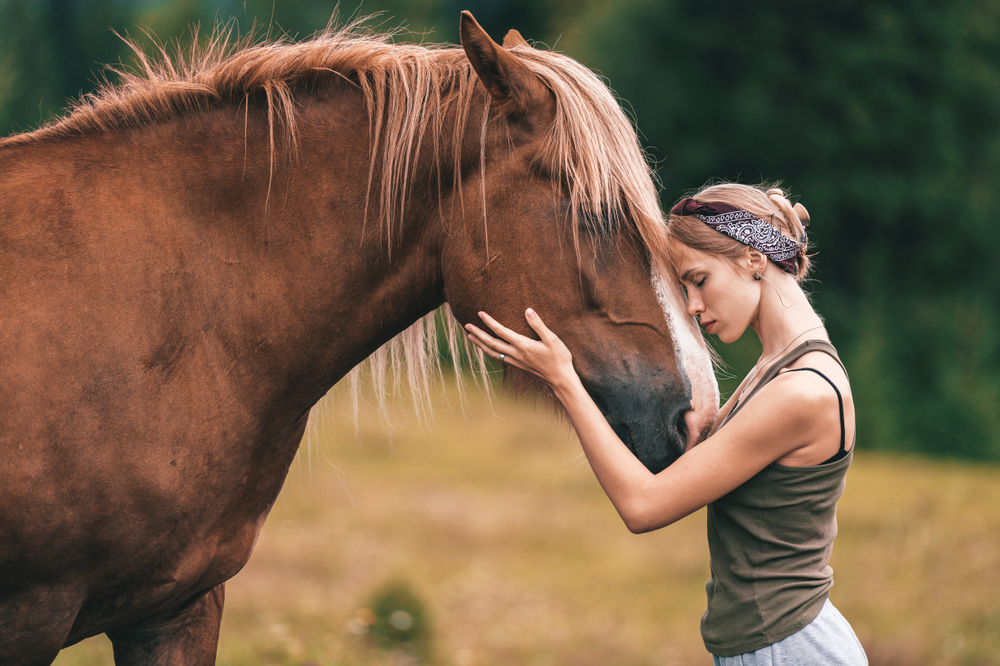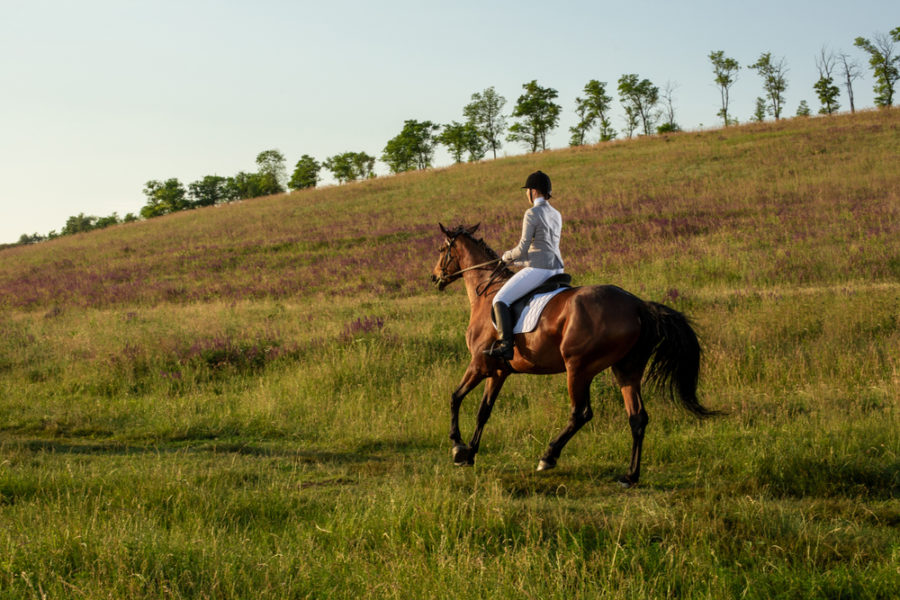This simple exercise can assist you in connecting and communicating with your horse through your seat instead of the reins.
Have you ever wanted to ride your horse from your seat with only the gentlest use of your reins? To achieve this, you can try this simple exercise to help you find a centered pelvis position. When you find this position, you’ll feel safer and more connected to your horse regardless of your discipline or experience level. You can give subtle cues and start riding your horse from your seat as opposed to through your hands – a win-win for both you and your equine companion!
Try it at home
Try this exercise sitting on a chair before taking it into the saddle. Be gentle with your body – this exercise is not about the range of motion, it’s to give you an idea of how your pelvis position affects everything else: your overall balance, your breathing and even your emotional state.
1. Get into position
Sit upright in a chair without leaning against the back.
2. Become aware
Take a moment to get in touch with your pelvis area. It’s the lowest part of your torso – everything underneath your belly button. This lowest part of your torso is shaped like a bowl. Picture this bowl being filled with water.
3. Tilt the pelvic bowl forward
Now hollow/brace the back (Image 1). The bowl will tilt forward, and the water will spill out the front. Stay in this position for a moment and feel into your body. You will probably feel more tension throughout your body, especially in the back. The connection of the seat bones to the chair is either less tangible or pokier. The breathing is shallower. The tension in the body comes with emotional tension and can make you feel insecure, tense, and anxious.
4. Tilt the pelvic bowl backward
Next, round the back and slouch (Image 2). The bowl will now tilt in the opposite direction, and the water will spill out the back. Again, take a moment to feel into this position. Your shoulders have probably dropped forward. Your ribcage is squeezed, and your breathing is impeded. In this slouched position you become a heavy weight for your horse to carry.
5. Shift the pelvis into its neutral position
Move the pelvis back and forth until you are not losing any water and your bowl feels balanced.
6. Engage your core
Add a small pelvic tilt so that your deep core muscles (particularly the Psoas muscle) are engaged. This will help stabilize your position while helping maintain flexibility. To do this, picture a big, heavy dragon tail hanging vertically down from your tail bone. This dragon tail lengthens your lower back ever so slightly. It’s a small movement that will help keep your core engaged (Image 3).
Next time you ride, you can do this exercise in the saddle and feel the effect on your position and the response of your horse.
This is the first step to find a balanced and aligned seat, no matter what stage you’re at on your riding journey. This exercise will help you find and fine-tune your position in the saddle so you can be safer and more connected to your horse.
Want to become even more connected? Click the button in the banner to take a fun two-minute quiz and determine where you are on your riding journey! Plus, get some great tips and free training videos on mastering this pelvis position.

